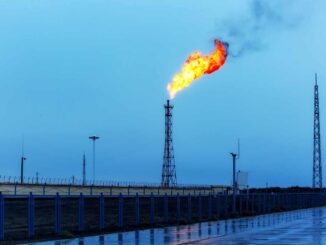
So goes Germany’s economy, so goes the EU. Germany’s GDP contracted 0.2% in 2024, marking back-to-back recessions, with forecasts for zero growth in 2025 due to persistent structural issues and trade tensions. There is a real concern for German consumers about jobs and increased energy prices, and it seems like the Energiewende policy accelerated the phase-out of nuclear power, shutting down the last three plants in April 2023 amid the ongoing Russia-Ukraine conflict.
So I will say the quiet part out loud. If President Trump lost, and Democrats were able to continue their Net Zero green energy policies, we would be facing what Germany is facing today.
Are you Paying High Taxes in New Jersey, New York, or California?
Other key issues were the invasion of Ukraine by Russia in February 2022 triggered sanctions that severed cheap Russian gas supplies, causing German energy prices to surge nearly 50% since 2021. Industrial production in Germany dropped to its lowest level since the pandemic, with a reported 21% decline from pre-2020 peaks driven by elevated energy costs and regulatory pressures. And Energy-intensive sectors like chemicals and steel faced uneven impacts, with less efficient firms losing market share while overall output contracted amid high gas consumption needs.
The German economy is in “free fall”with a 21% collapse in output thanks to green energy pixie farts and regulatory burdens.
Meanwhile, Trump’s gunning to cart off Germany’s crown jewels to America. pic.twitter.com/vJxtlzli4H
— Peter St Onge, Ph.D. (@profstonge) August 27, 2025
Net zero targets under the 2019 climate law, amended in 2024, mandate sector-specific emission reductions but have contributed to higher operational costs without binding annual budgets. Renewable energy output fell 3.2% in early 2025 due to weak wind and hydro performance, forcing a 6% rise in coal use and pushing primary energy consumption up 5.5%. Electricity prices in Germany exceed 40 cents per kilowatt-hour, three times higher than in U.S. manufacturing hubs like Tennessee, eroding competitiveness in automotive and machinery exports. The automotive sector, a pillar of German industry, faces declining demand from China and trade fragmentation, amplifying the energy crisis’s drag on manufacturing. U.S. President Trump’s tariffs, implemented in 2025, prompted Germany to slash its growth forecast to zero, as export-dependent firms confront barriers and consider relocation.
German companies view Trump’s policies as damaging, with 44% expecting negative business impacts from potential trade wars targeting EU goods. As Europe’s largest economy, Germany’s stagnation reduces intra-EU trade, with neighboring countries like Poland and Belgium suffering from supply chain disruptions tied to German industrial weakness. EU-wide energy prices remain elevated post-2022 crisis, with Germany’s heavy reliance on imports exacerbating a 1.25% potential GDP loss across the bloc from sustained high costs.
Structural shifts in Germany, including aging workforce and bureaucracy, compound energy-driven declines, projecting EU growth at just 1.1% in 2025 amid global uncertainty. We will see how the year unfolds, with high energy bills persisting due to fossil fuel phase-out commitments, as Germany’s coal exit is planned for 2030, which could risk further spikes if renewables fail to scale adequately.
The Bottom Line:
Energy Security Starts at home, and the Net Zero policies have added costs and reduced capacity to the point that deindustrialization has occurred at a horrific pace. Recovery at this point will be painful.
Avoid Paying Taxes in 2025
Crude Oil, LNG, Jet Fuel price quote
ENB Top News
ENB
Energy Dashboard
ENB Podcast
ENB Substack






